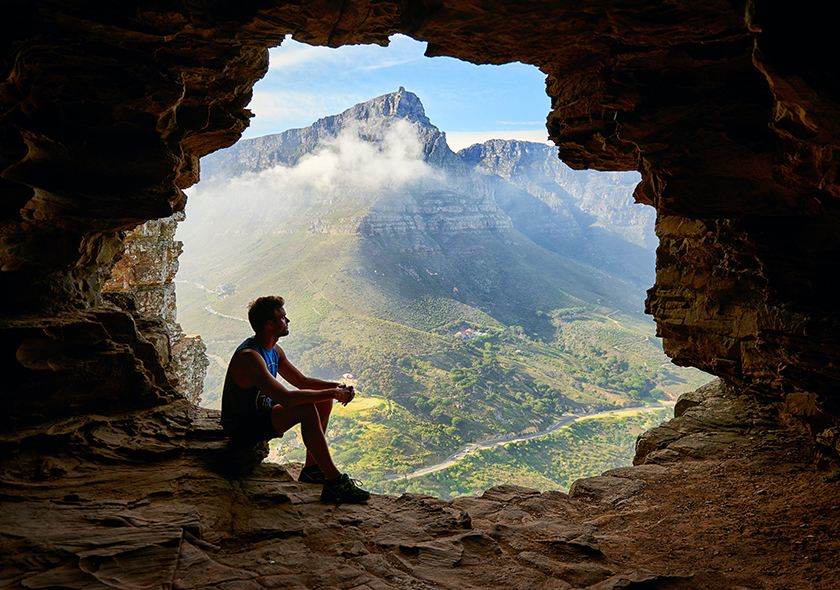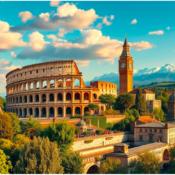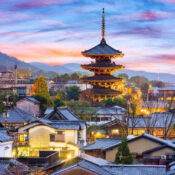16 Best Amazing Places To Explore in Poland
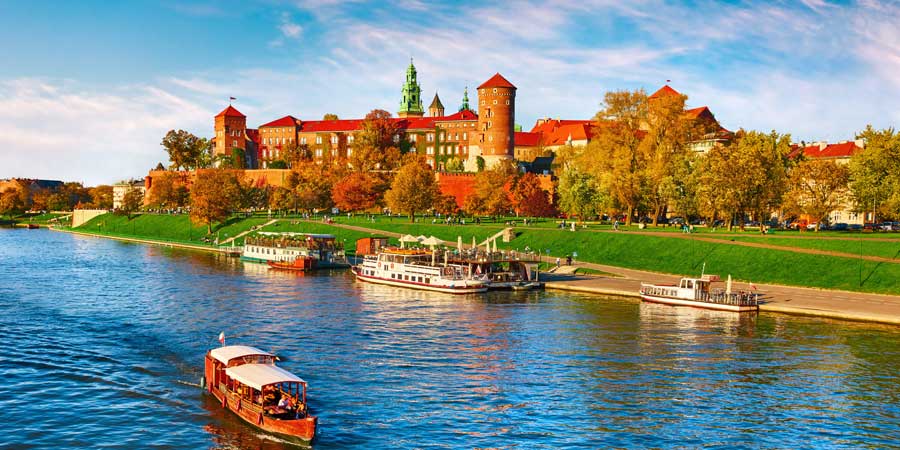
16 Best Amazing Places To Explore in Poland
The top tourist destinations in Poland will transport you back nearly a millennium, allowing you to experience magnificent medieval architecture, the ruins of World War II and its carnage, and castles and palaces dotting the nation. The Wieliczka and Bochnia Salt Mines and Krakow’s historic center are two of the country’s first-ever UNESCO World Heritage Sites.
However, this age-old nation is also home to vast national parks, lakes, and mountains, as well as apparently infinite paths that wind through pristine wilderness just waiting to be discovered.
Whatever your reason for visiting, use our list of the top locations in Poland to find the most breathtaking spots.
Best Places To Visit in Poland:
Below are the best places:
1. Krakow:
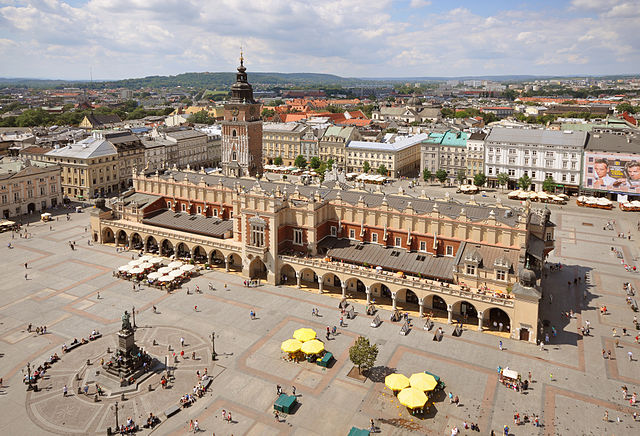
Krakow, one of Poland’s oldest cities, populated as early as the seventh century. Krakow’s Old Town Center still has its magnificent medieval architecture. Because the city avoided most of the WWII devastation that befell other Polish cities. UNESCO has recognized the Wawel Castle and the nearby medieval town of Kazimierz. Popularly known as the Old Jewish Quarter, as World Heritage Sites.
There are about forty urban parks in Krakow, such as the 21-hectare Planty Park. Which dates to the 19th century and encircles the city, and the Lasek Wolski Forest. It is only a short distance from the city center and has hiking and bicycling routes in a sizable, wooded area.
The 28 museums in Krakow are well worth visiting on wet days. Particularly the Wawel Royal Castle National Art Collection. which houses the royal jewels, period furniture, an extensive collection of Flemish tapestries. and a collection of armor and weaponry from the fifteenth century.
Oskar Schindler’s Enamel Factory, whose namesake owner helped more than 1,200 Jews evade concentration camps by hiring them. It is another noteworthy museum in Krakow. This intriguing site uses a variety of exhibits to simulate what life was like in Krakow during the Holocaust. such as ghetto lanes and a train station covered in advertisements for soldier recruitment. This exhibit can give you crucial historical background information before your trip to Auschwitz if you’re planning one.
Many popular day trips include visits to several significant outdoor attractions and activities. The Tatra Mountains and national park, the Auschwitz-Birkenau concentration camps, and Wieliczka, the oldest operational salt mine in the world, are noteworthy locations.
2. Warsaw, Poland:
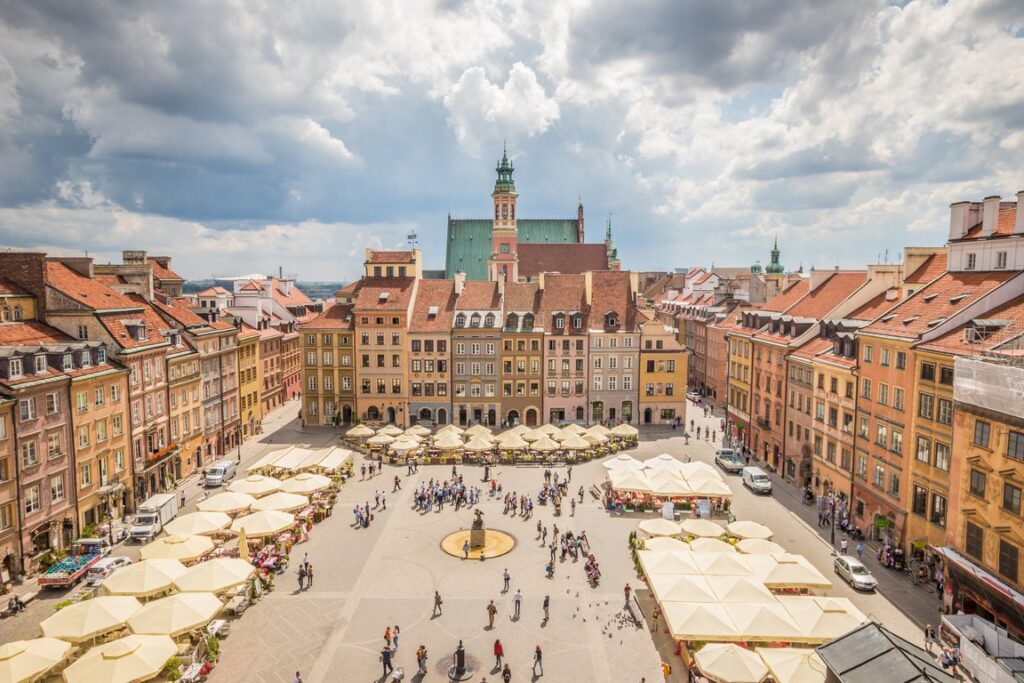
After World War II, the capital of Poland was reduced to rubble, with about 85% of its structures either destroyed or reduced to ashes by Nazi forces. The city started a vast project to rebuild its historic core according to the original intentions as soon as the war was over.
The city still has about 60 museums today, even though WWII also resulted in the loss of collections kept by museums and palaces. Warsaw has a lot of interesting museum options in addition to art and history museums. These include one of the world’s few museums of posters, a museum honoring the WWII Warsaw Uprising, a neon museum, and a museum of caricature.
Although there aren’t as many parks in Warsaw as there are in Krakow, Palace on the Isle. And its exquisite gardens more than make up for it. Surrounded by 76 hectares of urban forest, this 18th-century castle has pavilions, an outdoor theater, a planetarium, and much more. Constructed in 1680 as a bathhouse, the Baroque palace is adorned with exquisite artwork.
3. Tatra Mountains:
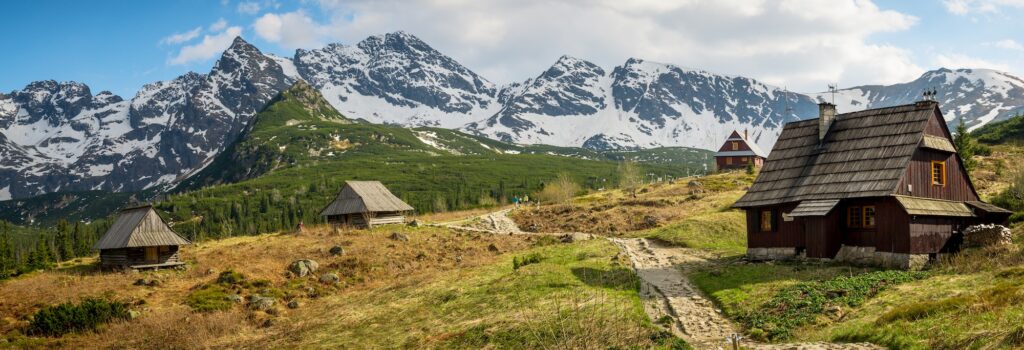
Slovakia and Poland are naturally divided by the Tatra Mountains and National Park. Even though Slovakia owns most of the mountain range, hiking between the two nations is not difficult. There are more than 270 kilometers of hiking routes on the Polish side of the park.
The Tatra Mountains are home to Rysy, Poland’s highest peak. It’s the highest Tatras peak in both countries, at 2,500 meters, that is climbable without a park guide. There are also more than 600 caverns in the park, the longest (23 kilometers. And deepest (824 meters) being the Wielka Sniezna limestone cave system.
There are mountain lakes, streams, and waterfalls in the Tatras. The biggest lake in the park is called Morskie Oko Lake. Reached only after a two-hour climb through slopes and a dense grove of Swiss pines. It is situated deep within the park.
4. Wroclaw,Poland:
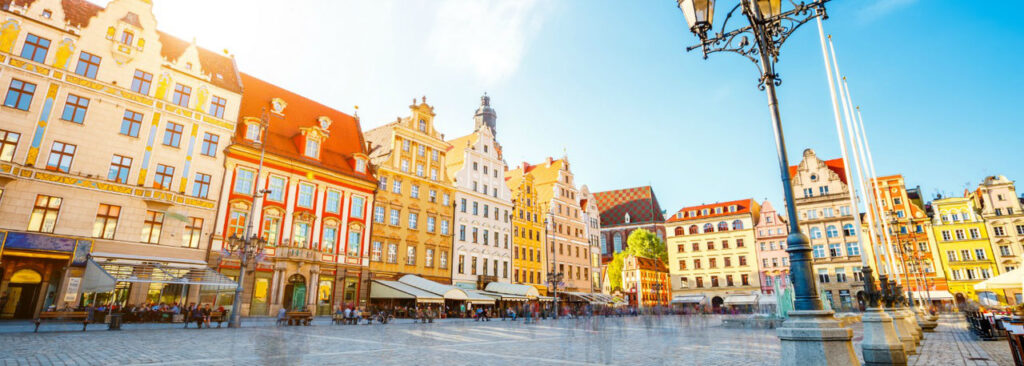
Wroclaw has not always been a Polish city; during the ages, it has belonged to Germany, Prussia, and the Kingdom of Bohemia. Only since 1945 has Wroclaw been formally a part of Poland. When the end of World War II altered some of Europe’s borders.
To find out more about the history of the city, it’s a good idea to visit the Lubomirski Museum, which covers a variety of WWII events in addition to the Nazi and Soviet invasions of the city. An overview of Wroclaw over the last 1.000 years is provided by the Wroclaw City Museum, which completes that history.
The Main Market Square, which dates to the 13th century and houses the Old Town Hall and St. Elizabeth’s Church, is the oldest part of Wroclaw. It’s one of the biggest market squares in Europe. The Pan Tadeusz Museum, a gorgeous tenement structure housing multimedia exhibitions devoted to Polish cultures, is just a short stroll away.
During the summer, tourists can explore the city by boarding open-air historic buses. Wandering around Wroclaw on foot can look for the city’s roughly 600 miniature bronze elves, which are hidden on lampposts, sidewalks, and around corners. Every September, the city organizes the Wroclaw Dwarf Festival.
5. Bialowieza Forest Reserve:
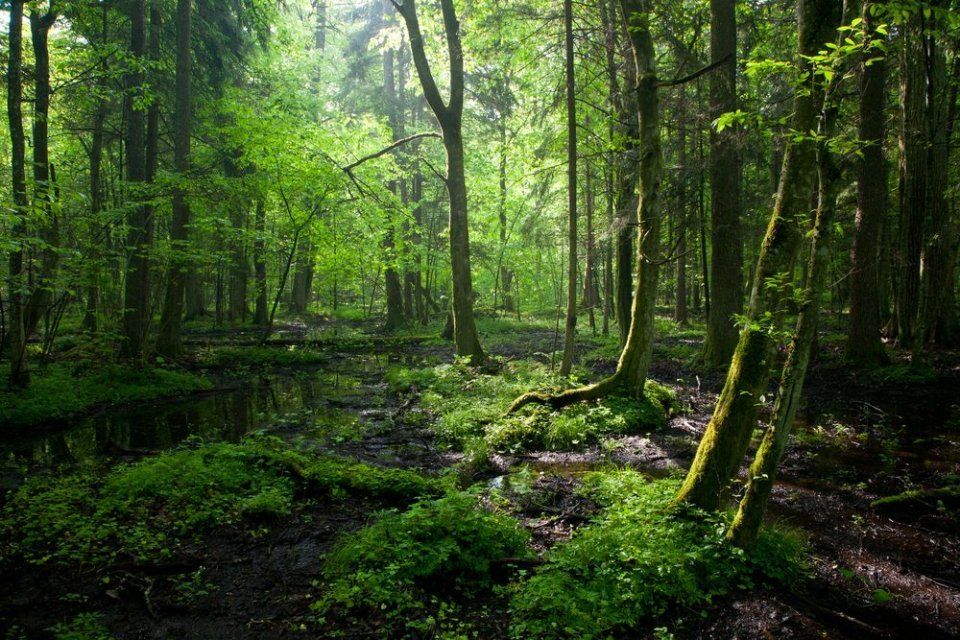
The Bialowieza Forest Reserve, the greatest remaining portion of Europe’s prehistoric forest. That formerly covered most of the continent, is deserving of its UNESCO World Heritage Site classification. The forest spans more than 1,400 square kilometers and is situated on the border between Poland. And Belarus (hikers can cross the border within the forest).
Birdwatchers can accompany local ornithologists on bird-watching tours in Bialowieza, which is a birdwatcher’s paradise. Large species such as bison can also be seen in the forest.
The Open-Air Museum of Wooden Architecture, which features windmills, wooden homes, a little wood chapel, a barn. And even a banya (sauna), is located inside the forest, as is the little settlement of Bialowieza.
Also Read: Best Town to Visit in Switzerland
6. Bieszczady Mountains:
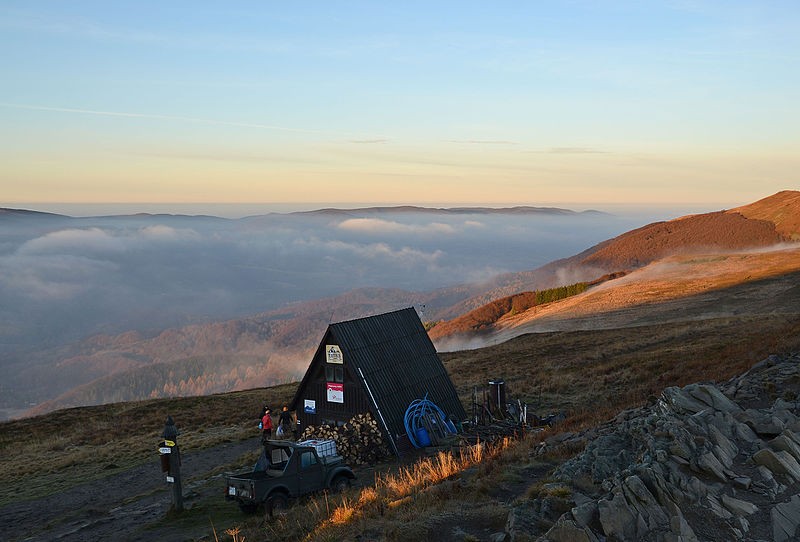
The Bieszczady Mountains, a vast range that reaches as far as Slovakia and Ukraine. Among the top destinations in Poland during the fall season. The valleys and meadows are ideal for trekking. Because they have a gentle upward and downward slope rather than being too steep. In the fall, the foliage here becomes a symphony of reds, oranges, and yellows.
One of the most well-known meadow routes is Polonina Wetlinska, which reaches a height of 1,255 meters. It’s a lovely, easy ascent that shouldn’t take longer than two hours. For those who wish to continue their trip, a modest guest house at the summit (one of the few in the whole mountain range) provides heated beds along with refreshments and drinks.
A sizable portion of the Bieszczady Mountains is covered primarily in beech forest and are a part of the UNESCO-designated East Carpathian Biosphere Reserve, which is home to bison, wolves, and brown bears.
7. Ojcow,Poland:
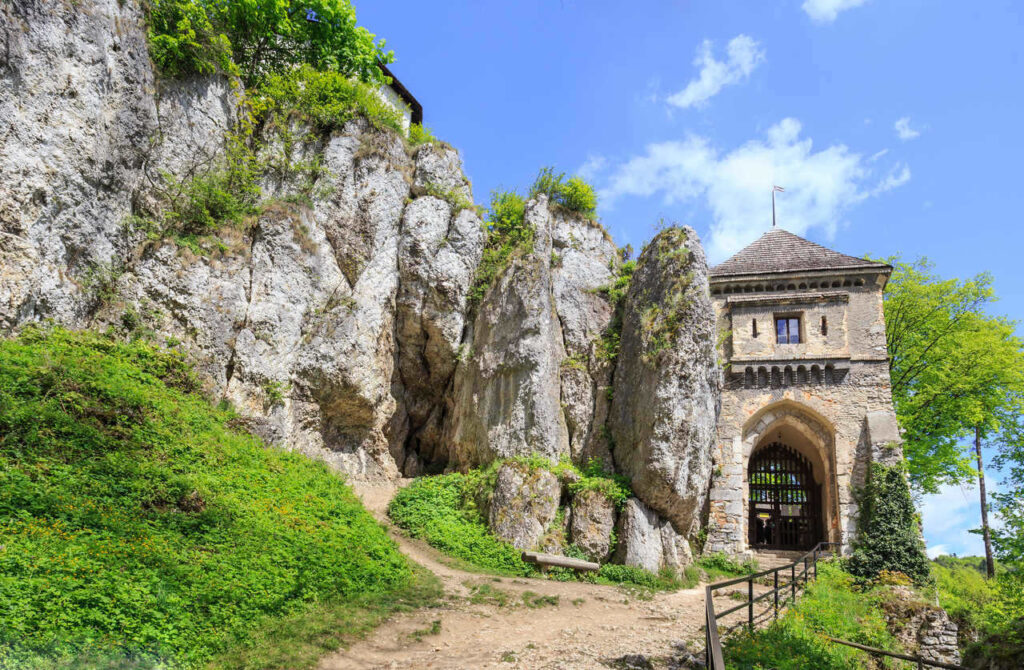
The entry point to Ojcow National Park is the little settlement of Ojcow, which is located about 26 kilometers north of Krakow. At just 21.46 square kilometers, Ojcow is the smallest national park in Poland. It highly forested, with over 400 caverns, two river basins, and towering limestone cliffs. The park is home to over 500 different species of butterflies, which are amazing to see in the spring and summer as they invade the paths and blossoming valleys.
The Renaissance castle at Pieskowa Skala and the remnants of a Gothic castle are two of the 25 castles and watchtowers connected by Poland’s most well-known hiking and tourism route, the Trail of the Eagles’ Nests. The 163-kilometer Eagles’ Nests Trail is accessible by minibus on the Castles Tour via The Eagles’ Nests Trail, Day Tour from Krakow, or by foot, bicycle, or both.
The park is home to two other museums: a section of the National Art Collection and the Władysław Szafer Natural History Museum.
8. Gdansk:
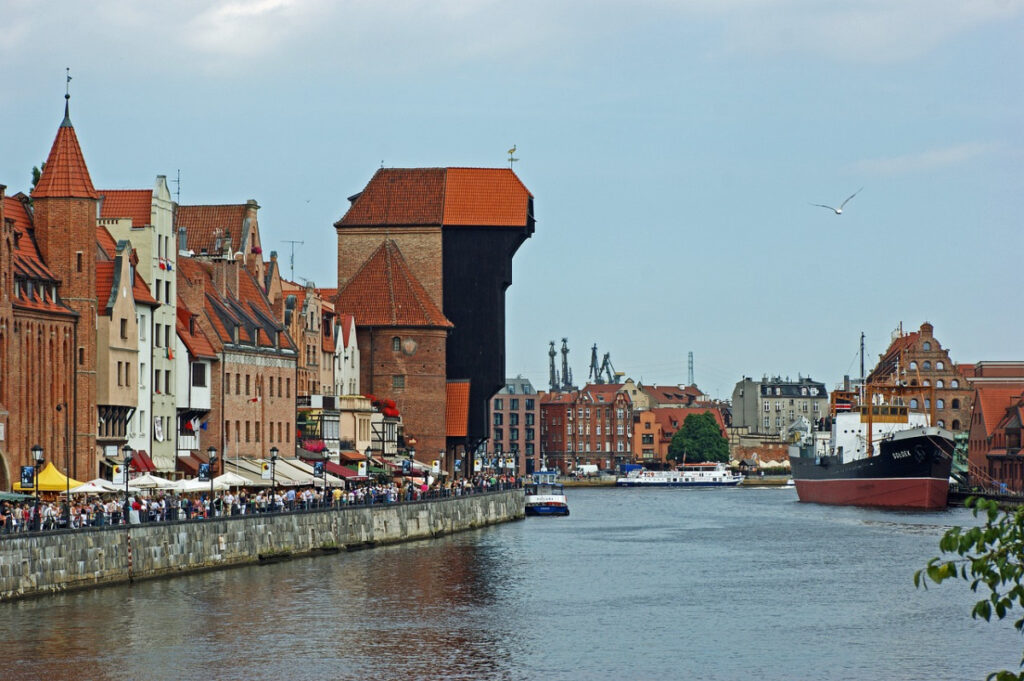
Poland’s principal seaport is in the historic city of Gdansk, which perched directly on a bay on the Baltic Sea. The majority of the city’s historic district, sometimes referred to as the Royal Way or Royal Route, built in the 17th century and in excellent condition.
The largest brick church in the world, St. Mary’s, the 700-year-old Wisloujscie Fortress in the shape of a star, and the 28-meter-tall Gdansk Nowy Port Lighthouse are all located in Gdansk.
Gdansk’s Museum of the Second World War among the top historical museums in the nation, despite the city not being directly touched by the conflict. Along with various vehicles, such as a German DKW motorcycle and a Polish Sherman tank, it also has relics, records, and images related to the conflict and the Holocaust.
9. Zalipie Village:
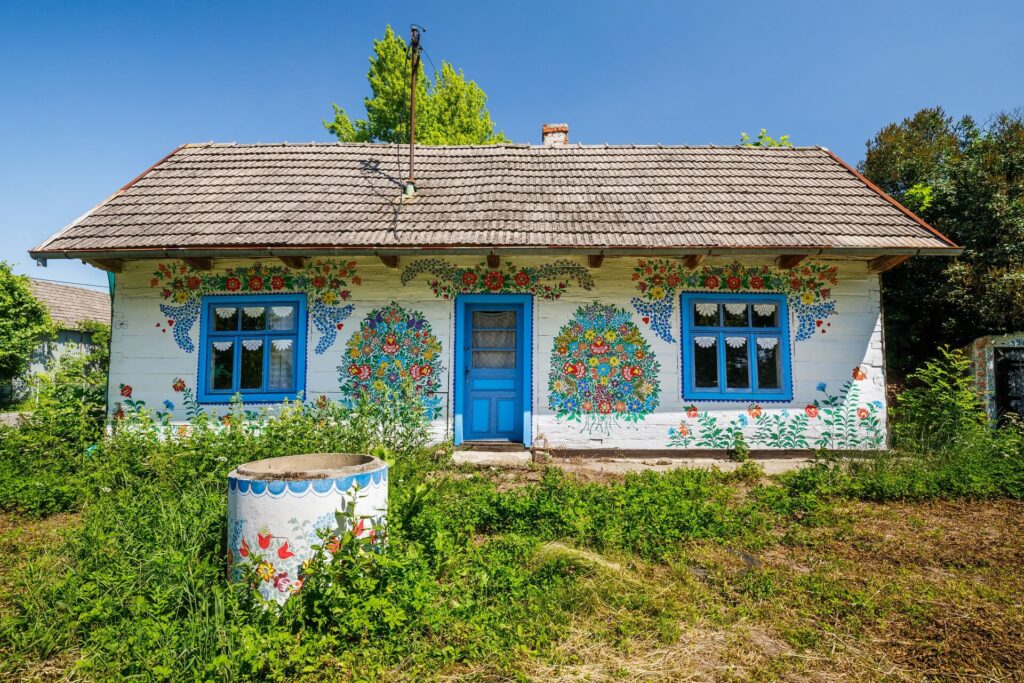
The folkloric flower murals that practically every structure in the village of Zalipie are the village’s most famous feature. This custom dates back more than a century, when women from the area painted soiled surfaces with vibrant patterns using a mixture of milk and powdered dye.
These days, nearly all buildings—including walls and furniture—indoors are painted in this style, including Saint Joseph’s church, barns, fences, and cottages.
The House of the Women Painters is possibly the most beautiful of the several painted structures. It houses a folk museum and regarded as the village’s cultural hub.
Felicja Curylowa, a Zalipie-born painter from the early 20th century, once lived in a three-room farmhouse decorated in paintings of flowers on both the inside and outside. This is a great visit. The history of the custom and the method of painting the flowers are on display at the Felicja Curyłowa Farmstead Museum.
Zalipie, about an hour and a half’s drive from Krakow, is a fantastic day trip destination.
10. Torun:
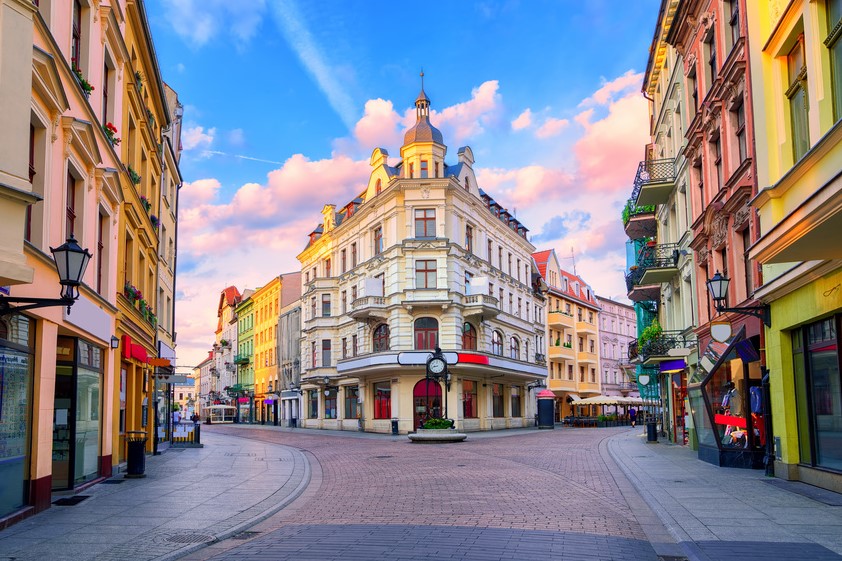
The history of Torun, one of the oldest cities in Poland, begins in the 7th century, while archaeologists think the first village may have founded as early as 1100 BC. Torun not bombed nor destroyed during World War II, therefore its medieval Central Marketplace and many Gothic and wood-beam 16th-century buildings survive today.
One of these homes is the astronomer Nicolaus Copernicus’s birthplace, which has transformed into a museum honoring the life and contributions of the scholar.. It devoted to a Polish-only variety of gingerbread and offers hands-on baking lessons using traditional baking molds.
The entire Old Quarter neighborhood has named a UNESCO World Heritage Site; it wonderful place to explore on foot and get lost in small streets to learn about the local architecture and culture.
This is the 13th-century Teutonic castle of Torun. Apart from the adjoining watermill and the sewage tower and cellars, it is partially in ruins.
11. Isle of Usedom:
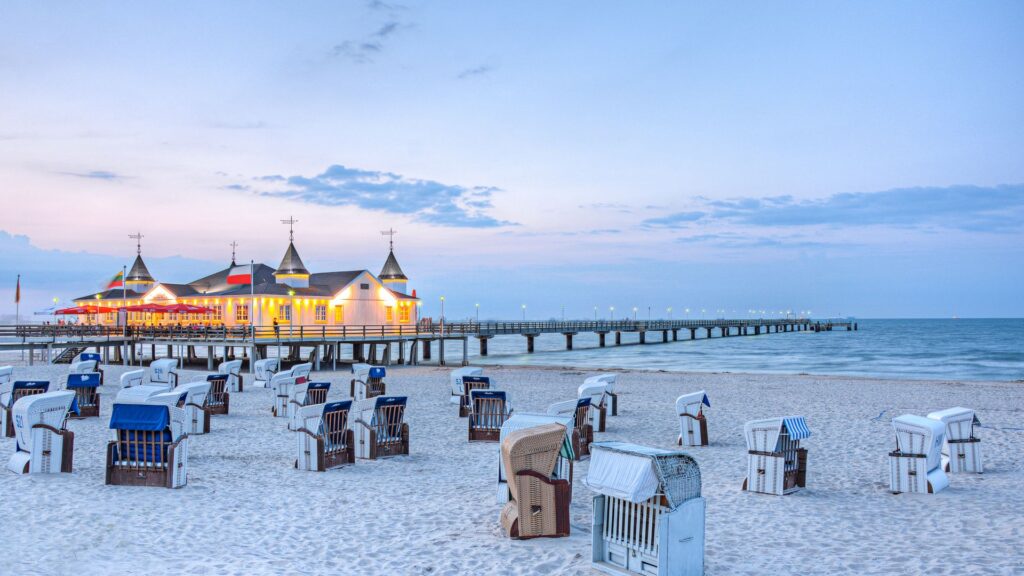
Since 1945, this island in the Baltic Sea has formally divided between Germany and Poland. Usedom, known as “the sun island,” due to its high annual sunshine hours, is a well-liked vacation spot in both nations.
The main draws are the island’s soft white beaches, seaside resorts, and an abundance of summertime sports and activities. Other attractions include the remnants of the Karnin Lift railway bridge, which now recognized as a Historic Symbol of Engineering in Germany, a private botanical garden, and the Dannenfeldt Mausoleum and cemetery.
The island scattered with lakes, ecological reserves, and well-kept gardens.
12. Bialystok:
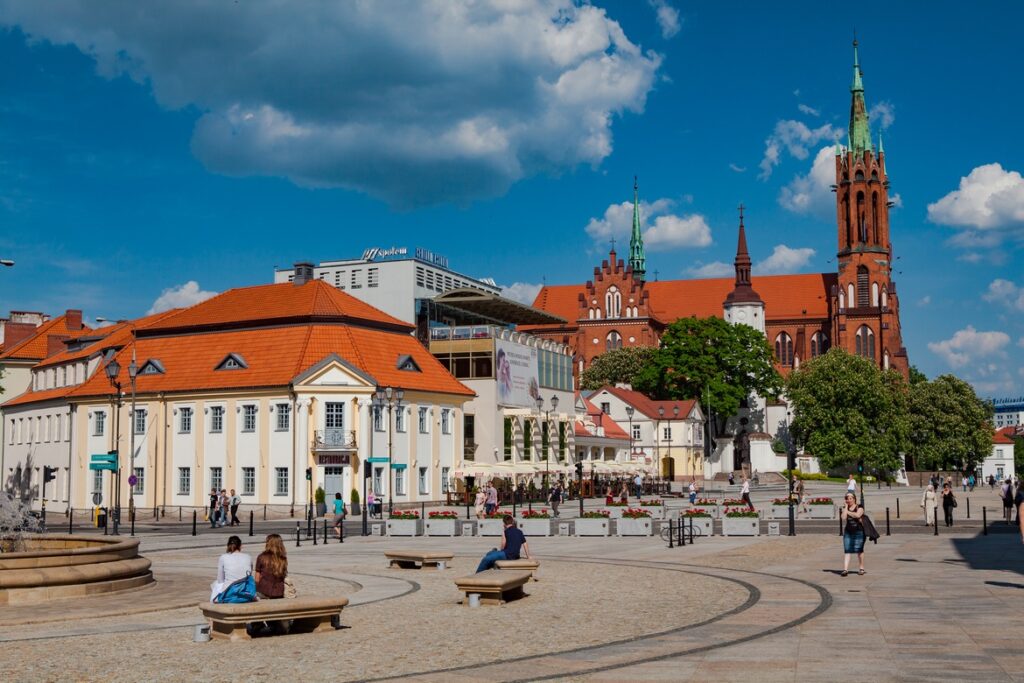
Białystok is sure to delight history and architecture enthusiasts with its hundreds of magnificent historic structures. One of the most beautiful attractions in the city Branicki Palace, which constructed by a wealthy politician who Polish-Lithuanian and aspired of becoming Polish king. However, lesser Hasbach’s Palace is also worth a visit. The graceful building designed in the French, Dutch, and Tuscan Renaissance styles.
Take a stroll around Kościuszko Market Square, which flanked by a plethora of quaint cafés, exquisitely decorated townhouses. And the Podlaskie Museum, which mostly devoted to Polish paintings and artwork.
Take a stroll around Lipowa Street on a beautiful day as well. Almost destroyed during World War II, Lipowa Street has renovated to become a terrific area to see boutique shops. And historically significant structures.
The Historical Museum, a division of the Podlaskie Museum, is a fascinating place to visit if you’d like to see what an affluent 19th-century bourgeois home might have looked like, replete with period-appropriate furnishings.
Situated in Wasilków, the open-air Podlaskie Museum of Folk Culture features more than forty authentic wooden structures for visitors to explore. Such as windmills and a carpenter’s hut, together with antiques like child playthings, forestry implements, and rural transit carriages.
13. Karpacz, Poland:
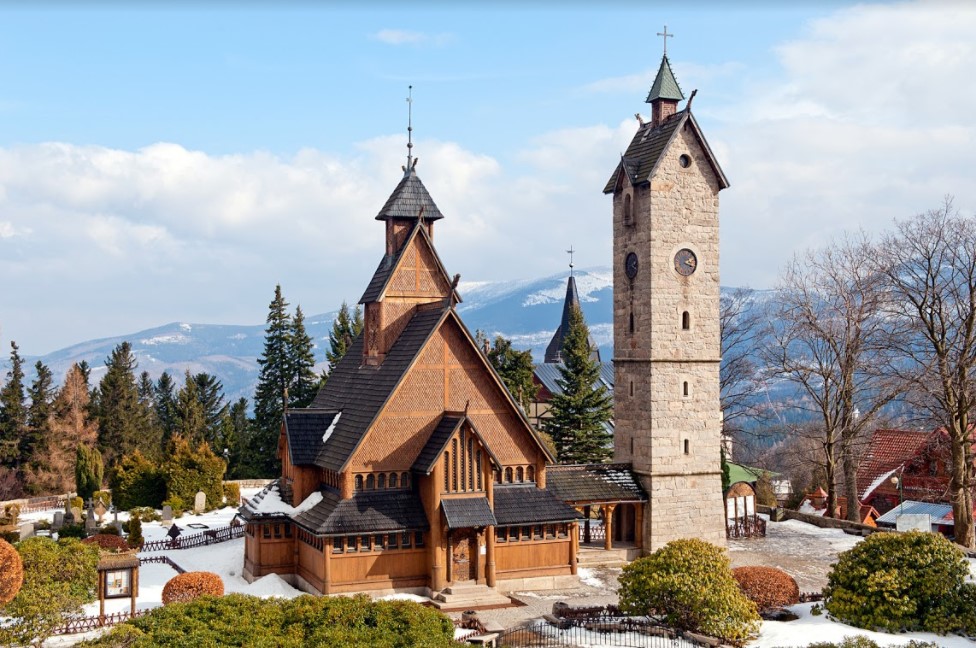
In winter, a significant number of people visit this mountain spa town to enjoy skiing on the well-known Mount Śnieżka. Karpacz is a winter wonderland with excellent snowboarding, ski jumping, and winter trekking.
Nearby Karkonosze National Park has many paths throughout the warmer months. Aspiring hikers frequently traverse the three peaks of Sniezka, Snieznik, and Sleza, which are all at least 1,400 meters high. In this park, birdwatchers can also search for over 100 different types of feathered animals.
The town’s principal structure is the 13th-century Lutheran Wang Chapel, which constructed completely of wood and requires no nails. There are also several museums, such as the history-focused Museum of Sports and Tourism, the Museum of Toys (which has toys dating back 200 years), and the unusual World of Trains, which has a sizable collection of model railways and a virtual reality rollercoaster.
14. Leba,Poland:
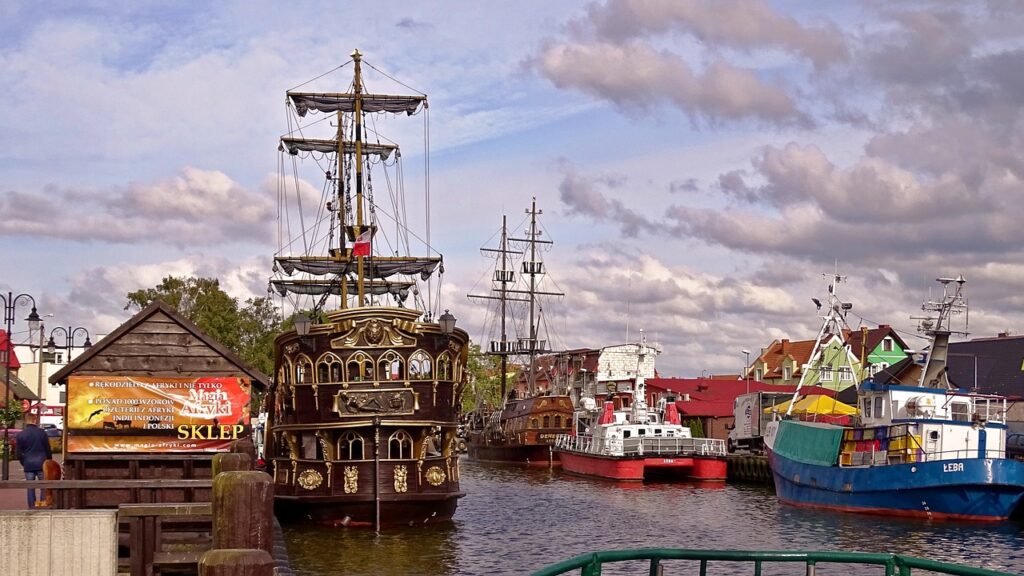
One of Poland’s top beach getaways is the little town of Leba. Leba keeps its relaxed vibe all summer long, even though it becomes busy and overrun with tourists. The main draws here are the gentle surf and the rolling sand dunes.
There are almost 140 kilometers of hiking paths in the area, as well as horseback riding, for those who prefer more activities than merely lazing in the sun.
Slowinski National Park has 32 kilometers of coastline and is home to “moving dunes,” which can move up to 10 meters annually due to wind. It’s a popular destination for tourists and a breathtaking sight. In addition to pine trees and peat bogs, this area offers excellent birdwatching chances.
15. Wieliczka:
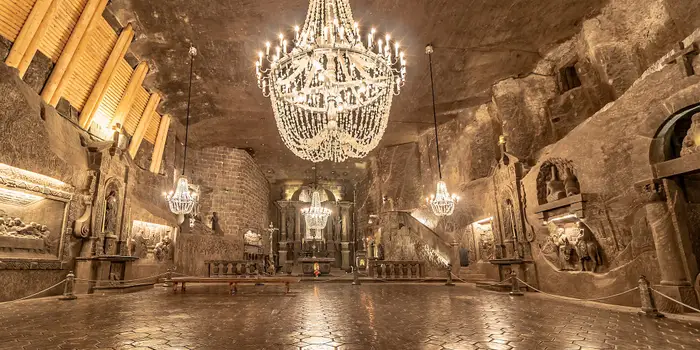
The Wieliczka Salt Mine, one of Poland’s most popular tourist destinations, is in the historic city of Wieliczka. This UNESCO World Heritage Site, which dates to the 13th century. Europe’s oldest salt mine and makes for a fantastic day trip from Krakow. It stopped being a commercial salt producer in 1996 after hundreds of years and became a tourist destination instead.
Experience Chopin’s music performed with a light display over a stunning underground lake, marvel at the amazing salt sculptures. Learn about the history of salt mining in Poland by taking the Tourist Route, which is the tour that is most recommended for visitors. Additionally, you may explore St. Kinga’s Chapel, an incredible church made completely of—you guessed it—salt. This features the elaborate archways, octagonal tiled flooring, chandeliers, and altar.
Should you return for another adventure, take the Miner’s Route. As visitors descend 101 meters below ground to explore the unfinished chambers surrounding the Regis Shaft . Learn how to use mining equipment, such as a carbon monoxide absorber, they become inexperienced miners.
16. Oswiecim,Poland:
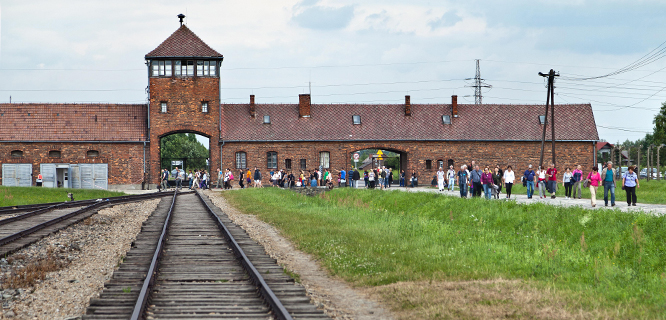
Travel to Oswiecim to see the Auschwitz-Birkenau Memorial camps, one of the most depressing locations on earth. To commemorate the victims of the Holocaust and preserve documentation of the horrifying events that took place there. The concentration and extermination camps turned into museums.
Travelers who wish to visit the camps during peak times must schedule a guided tour with an on-site educator. They will walk you around the main attractions and give you an explanation of the history of the camps, such as the wooden prison cells, hospital barracks. And railway tracks that used to transport people to Birkenau. It’s a deeply poignant and touching experience that gives a significant historical event a human face.
Click here, to know more.
For more information, visit our website Travel India Info or send your queries to info@travelindiainfo.com. We will be happy to assist you. Happy Travelling!!
Recent Posts
Europe Travel Guide: Best Places to Visit & Explore
15 Best Amazing Places to Explore in Scotland
9 Best Amazing Day Trip To Explore from Kyoto
